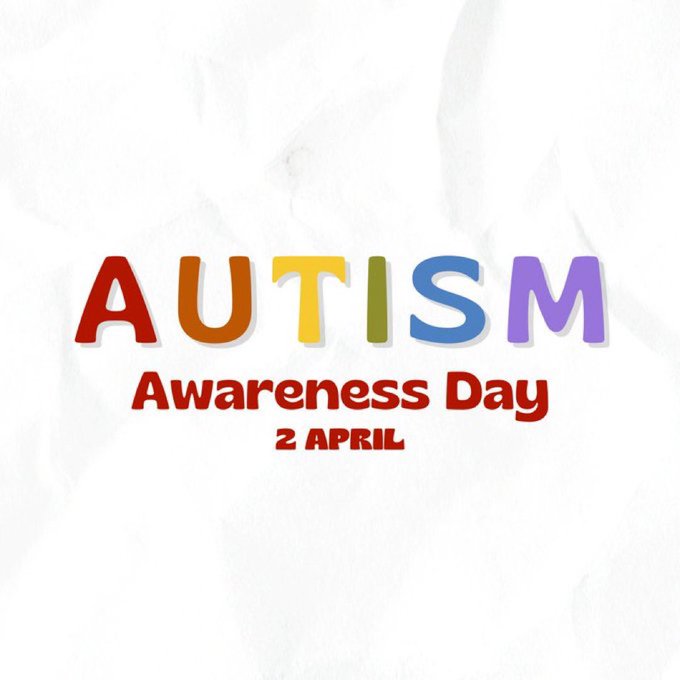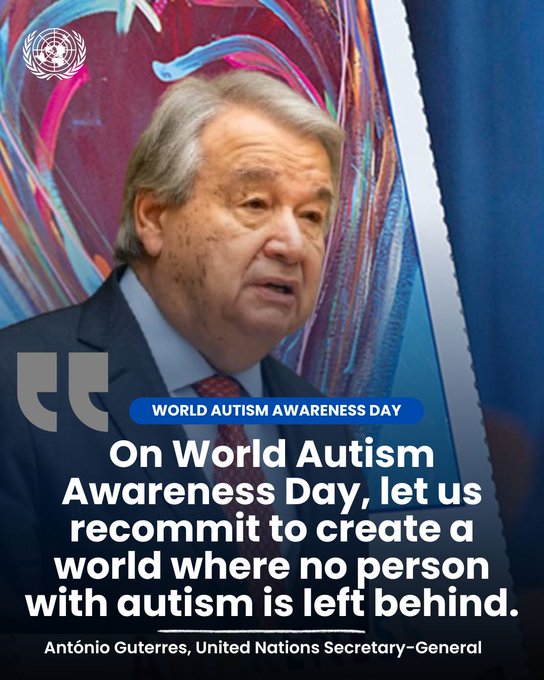NAIROBI, Kenya – To raise awareness of autism and its acceptance in society, April 2 is designated as World Autism Awareness Day each year.
More children are receiving accurate and timely diagnoses of autism spectrum disorders (ASD) as a result of greater awareness.
It is now crucial for parents and teachers to detect the symptoms and create plans to support neurodivergent students effectively.
Naturally, parents who have a child with autism spectrum disorder (ASD) worry about them.
The care of a unique child and figuring out their place in society can cause parents of autistic children to face a great deal of psychological stress.
They are frequently pitied and lack the support of others around them. Autism, however, is not a sickness.
Significant progress has been accomplished over the years, mostly due to the hard efforts of autistic advocates who have raised awareness of the lived experiences of autistic people in international debates.
The necessity of increasing public knowledge of autism was emphasised in the 2007 UN General Assembly resolution (A/RES/62/139).
This #WorldAutismAwarenessDay, we celebrate the remarkable talents and contributions of autistic individuals.
In recognition of the contributions autistic people give to their communities and the wider world, the global movement has grown beyond awareness to actively promote acceptance, respect, and inclusion more than 17 years later.
“Let us recommit to create a world where no person with autism is left behind,” said UN Secretary General Antonio Guterres ahead of World Autism Awareness Day.
What is autism
Autism is a brain development disorder that impacts behaviour, speech, and social interaction. Since autism is a spectrum disorder, each person with the disorder is unique and has a range of skills and interests.
As early as 18 months of age, autism can be identified in children. Physicians and psychologists assess a child’s social connections, communication abilities, and developmental history. In autism evaluations, carer reports and direct assessments are both very important.
Symptoms
Early infancy is when some children exhibit symptoms of autism spectrum conditions, such as decreased eye contact, a lack of reaction to their name, or a lack of interest in their careers.
Some children may grow normally for the first few months or years of their lives but then abruptly lose their language skills or become angry or introverted. Signs typically appear by the age of two.
From low functioning to high functioning, each kid with an autism spectrum condition is likely to exhibit a different pattern of behaviour and severity.
While some children with autism spectrum conditions exhibit lower-than-normal intellect, others struggle to learn. While they pick things up fast, other kids with the illness struggle to communicate, apply what they’ve learnt in real-world situations, and adapt to social settings.
We came, we saw, we walked on #WorldAutismAwarenessDay because #TogetherWeAreUnstoppable. #MTNFoundation
It can occasionally be challenging to assess the severity of symptoms because every child has a different combination of symptoms. Usually, it depends on the severity of the impairments and how they affect one’s capacity to operate.
The following are some typical symptoms of autism spectrum disorder.
Social communication and interaction
A child or adult with an autism spectrum disorder may have problems with social interaction and communication skills, including any of these signs:
- Fails to respond to his or her name or appears not to hear you at times
- Resists cuddling and holding, and seems to prefer playing alone, retreating into his or her world
- Has poor eye contact and lacks facial expression
- Doesn’t speak, has delayed speech, or loses previous ability to say words or sentences.
- Can’t start a conversation or keep one going, or only starts one to make requests or label items
- Speaks with an abnormal tone or rhythm and may use a singsong voice or robot-like speech
- Repeats words or phrases verbatim but doesn’t understand how to use them
- Doesn’t appear to understand simple questions or directions
- Doesn’t express emotions or feelings and appears unaware of others’ feelings.
- Doesn’t point at or bring objects to share interest
- Inappropriately approaches a social interaction by being passive, aggressive, or disruptive.
- Has difficulty recognizing nonverbal cues, such as interpreting other people’s facial expressions, body postures or tone of voice
Patterns of behavior
A child or adult with an autism spectrum disorder may have limited, repetitive patterns of behaviour, interests, or activities, including any of these signs:
- Performs repetitive movements, such as rocking, spinning or hand flapping
- Performing activities that could cause self-harm, such as biting or head-banging
- Develops specific routines or rituals and becomes disturbed at the slightest change
- Has problems with coordination or has odd movement patterns, such as clumsiness or walking on toes, and has odd, stiff or exaggerated body language
- Is fascinated by details of an object, such as the spinning wheels of a toy car, but doesn’t understand the overall purpose or function of the object
- Is unusually sensitive to light, sound or touch, yet may be indifferent to pain or temperature
- Doesn’t engage in imitative or make-believe play
- Fixates on an object or activity with abnormal intensity or focus
- Has specific food preferences, such as eating only a few foods or refusing foods with a certain texture
As they mature, some children with an autism spectrum disorder become more engaged with others and show fewer disturbances in behaviour. Some, usually those with the least severe problems, may eventually lead normal or near-normal lives. Others, however, continue to have difficulty with language or social skills, and the teen years can bring worse behavioral and emotional problems.
When to see a doctor
Babies develop at their pace, and many don’t follow the exact timelines found in some parenting books. However, children with an autism spectrum disorder usually show some signs of delayed development before the age of 2 years.
If you’re concerned about your child’s development or you suspect that your child may have an autism spectrum disorder, discuss your concerns with your doctor. The symptoms associated with the disorder can also be linked with other developmental disorders.
“People with autism are making enormous contributions to our world. Let’s build a society where no one is left behind.”– @antonioguterres, UN Secretary-General , on #WorldAutismAwarenessDay
Signs of autism spectrum disorder often appear early in development when there are obvious delays in language skills and social interactions. Your doctor may recommend developmental tests to identify if your child has delays in cognitive, language, and social skills.
- Doesn’t respond with a smile or happy expression by 6 months
- Doesn’t mimic sounds or facial expressions by 9 months
- Doesn’t babble or coo by 12 months
- Doesn’t gesture — such as point or wave — by 14 months
- Doesn’t say single words by 16 months
- Doesn’t play “make-believe” or pretend by 18 months
- Doesn’t say two-word phrases by 24 months
- Loses language skills or social skills at any age





